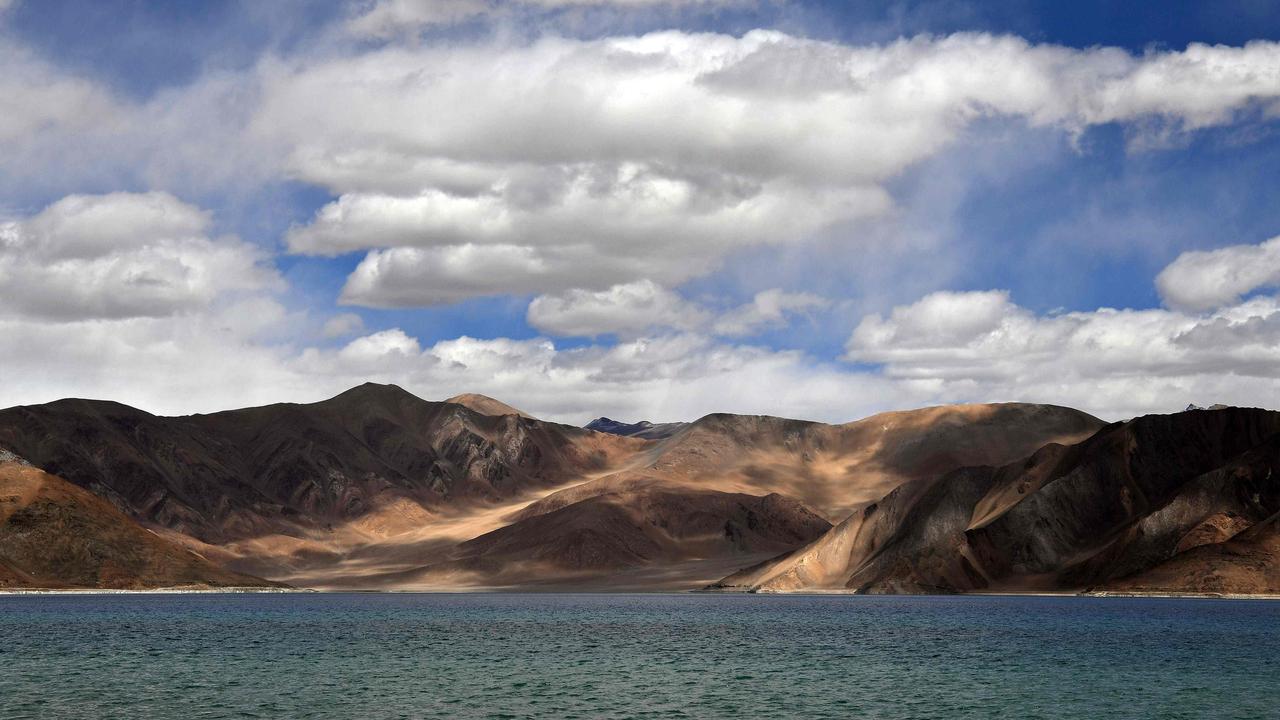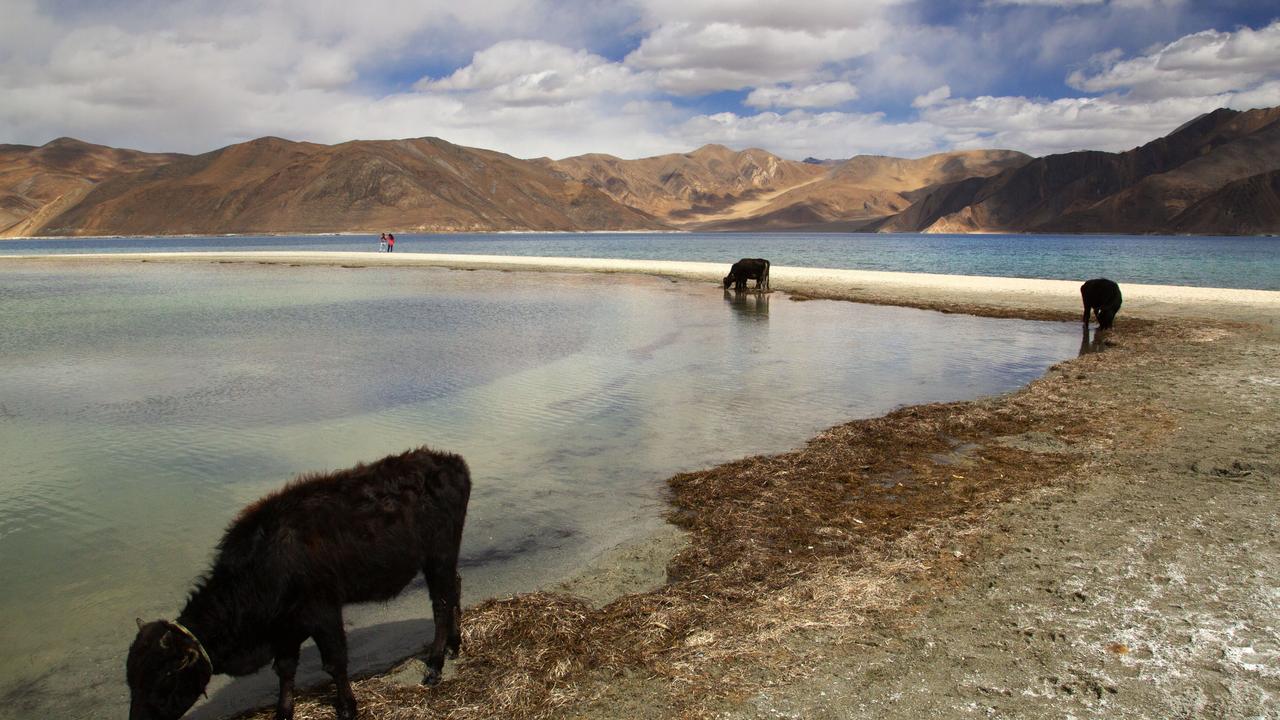China India border: What sparked battle that claimed at least 20 soldiers’ lives
In what is labelled an “extraordinary escalation” of China-India tensions, soldiers were beaten to death with rocks and studded bamboo rods.
Confusion reigns how what was supposed to be a “disengagement” from a simmering conflict between India and China, high in the Himalayas, led to the bloody deaths of at least 20 and possibly as many as 46 soldiers.
The nuclear armed neighbours have long quarrelled over where their respective frontiers, drawn up more than a century ago by Britain, lie and there have been regular skirmishes between the pair. But not since 1975 has a death occurred.
It’s being called an “extraordinary escalation” of the conflict between the two regional heavyweights which India claims was kicked off by China’s building of a military post in what was supposed to be no-man’s land.
RELATED: China-India border dispute could ‘spiral out of control’
Reports are the fracas was brutal with Indian soldiers “beaten to death” with rocks and even bamboo sticks covered in nails. Some troops may have frozen to death in sub zero temperatures on the roof of the world.
Chinese media has said the stand-off could be “spiralling out of control”.

In recent months, India and China have come to blows in the rocky and barren terrain of the Galwan Valley and around Pangong Lake in the disputed Aksai Chin region. India claims the area as part of its Ladakh region while China administers it as part of Tibet.
Both countries have forces in the area that are meant to remain either side of a demarcation line known as the Line of Actual Control (LAC) – but that doesn’t always happen.
Each side is also acutely sensitive to the other shoring up its position. Beijing was said to be enraged by New Delhi’s recent decision to build a road close to the LAC. New Delhi was in turn enraged by Beijing’s decision to then send troops and start building military installations on its side of the LAC.


BATTLE BEGAN AS SOLDIERS WERE WALKING AWAY
For months, soldiers have been getting into high altitude scuffles. But, just last week, the two sides said they would calm tensions. Chief General of the Indian Army, M.M. Naravane, said on the weekend that the “entire situation along our borders with China is under control”. He said “disengagement” was taking place.
Yet it has emerged that it was during this disengagement that the battle flared up.
Chinese media has been full of rhetoric but scant on detail about the deadly clash. In contrast, Indian newspapers have gone into gory specifics.
According to the Indian Express, the incident occurred at the confluence of the Galwan and Shyok rivers, close to the LAC, where a “buffer zone” had been agreed upon.
Indian soldiers would remain to the west of the confluence and Chinese troops to the east of the LAC, therefore putting some distance between them.
“An argument, officers said, started over the position of Chinese soldiers who had started erecting a new post on the southern bank of Galwan river in this buffer zone,” reported the paper.
“When the commanding officer and his troops insisted that the Chinese remove the post, the situation quickly escalated, leading to physical violence.
“The Chinese side, officers said, used sticks, clubs, bats, bamboos with nails during the fight and the Indian side too retaliated.”
A number of soldiers fell, or were pushed, into the river, Indian Express claimed.
“Some bodies were recovered from the river while others had signs of being brutalised. A few soldiers died of hypothermia.”
The Times of India said the battle was a “free for all” at 14,500 feet with steep ravines and gorges.
“Rival soldiers attacked and chased each other, with many falling into the Galwan rivulet”.
One of these killed was Colonel B Santosh Babu who was leading India’s 16 Bihar regiment that was involved in the battle.

News agency AFP reported China’s foreign ministry spokesman Zhao Lijian as saying India had crossed the border twice on Monday, sparking the deadly engagement.
For its part, China’s Global Times, a Communist Party mouthpiece, said the “arrogance and recklessness” of India was the reason for the tension.
“The clash in the Galwan Valley this time has led to casualties on both sides, indicating China-India border tensions, amid constant frictions, may spiral out of control.”
While Chinese media has not confirmed any deaths on its side, India has reported as many as 26 Chinese soldiers may also have died which would bring the death toll to 46.
Notably, for two countries with arsenals of nuclear missiles, there are no reports of even any guns being used. The rivals had previously agreed not to use firearms against one another along the LAC. But there was no such agreement about nail studded sticks.

‘LOOKING VERY, VERY BAD’
Some defence analysts worry that the deaths may ratchet up the anger.
Associate Professor Jingdong Yuan, from Sydney University's China Studies Centre, said the two nations had undefined boundaries stretching 4000km from east to west and includes 120,000sq km of disputed territories. Despite this, tempers have never flared to this extent.
“Contention continues as both sides think what they are doing is on their side of the LAC,” he said.
“The real issue is whether this will further escalate involving use of weapons; that could become extremely serious, considering that both sides have mobilised significant sizes of forces along the LAC. Given Beijing and Delhi are both nuclear powers, failure to control further escalation could be quite serious.”
Defence Editor at The Economist newspaper, Shashank Joshi, told the BBC it was “an extraordinary escalation”.
“No shots fired for 45 years, and then at least 20 soldiers dead in one evening in rock-throwing and bludgeoning,” he said.
Vipin Narang, a security analyst at the Massachusetts Institute of Technology, told the same network “it is looking very, very bad”.
“Once fatalities are sustained, keeping everything quiet becomes hard on both sides. Now public pressure becomes a variable,” he said.
WHY THE BORDER BROUHAHA?
The root cause of the seemingly intractable conflict is the drawing of the border in the first place.
Between 1865 and 1914, Britain, which at that point ruled India, proposed a number of boundaries in the Himalayas. These would divide India from Tibet, which at the time was independent and had not been taken over by Communist China.
The area of Aksai Chin, which is at the heart of the current fighting, was all or partly put on India’s side of various lines. Due to its remoteness, however, it was essentially unpopulated, had no border installations and was hard for India to even reach.

So much so that, in the 1950s, it took years for New Delhi to realise Beijing had built a road right across the region. The two nations went to war over the border in 1962.
China now claims the entire region as its own with the LAC effectively cordoning off Aksai Chin from the rest of India.
Both sides have urged the other to retreat to their side of the border. But given India and China can’t come to an agreement on where that border is, clashes could continue.
China’s Global Times said all out war was unlikely.
“Observers believe that small-scale conflicts in border regions between China and India will likely keep on occurring, but a large-scale military conflict will not,” it said in an editorial on Tuesday.
However, that doesn’t rule out more bloodshed and the more is spilt, the harder it will be to ensure a battle in one of the world’s coldest regions doesn’t turn hot.




